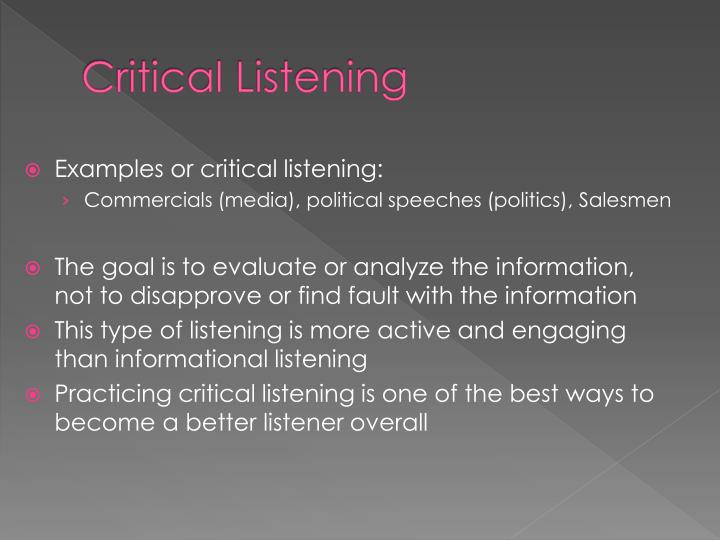

Ear Training Drill #8: Pink Noise +/–12 dB x2.Time-Based Effects: Stylistic Approaches.Ear Training Drill 7: Program Material +/-12 dB.Ear Training Drill 6: Program Material +/-12 dB.


Critical listening how to#
Whether you are a recording musician looking to ready your music for CD, or an aspiring producer or engineer, you'll not only learn what elements are most important in a mix, what sort of arrangements you should be working towards, and how to optimize your mix to make your song as compelling as possible in the process, you'll open your ears up to a whole new level of critical listening and awareness. The course will also take you through the steps to turn your listening space into a more critical listening environment. Critical Listening 1 also explores various types of instruments and arrangements, distinguishing between Telecasters, Strats, and Les Paul guitars, single versus dual-coil pickups, direct versus miked acoustic and electric guitars, tremolo versus vibrato, Rhodes versus Wurlitzer electric pianos, and more. You'll learn to hear and identify techniques such as panning, alternate types and uses of reverb, delay, compression, phasing/flanging/chorus, and different types of distortion. Through weekly critical listening drills, analysis of classic recordings, and comparative studies of different styles of mixing, you'll learn to identify width and depth, frequency range, dynamics, and the different mix approaches used in various musical genres. Interdisciplinary Music Studies (Create Your Own Major).Music Composition for Film, TV, and Games.Electronic Music Production and Sound Design.Music Theory, Harmony, and Ear Training.


 0 kommentar(er)
0 kommentar(er)
